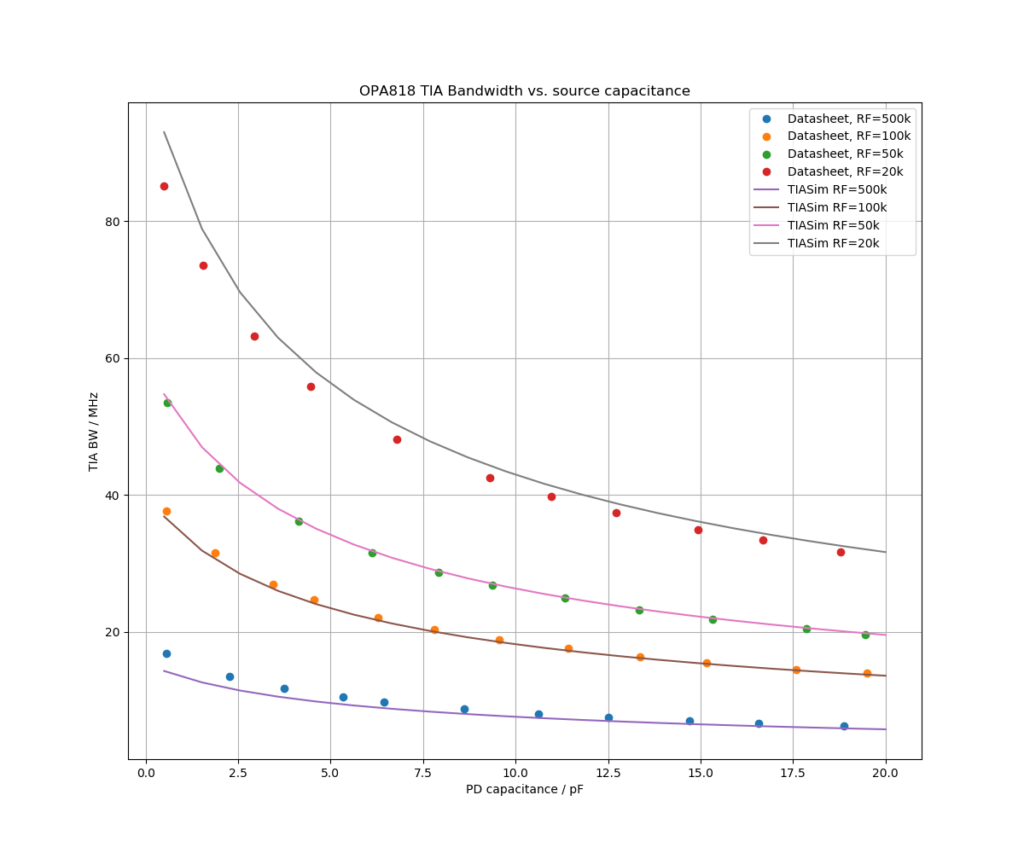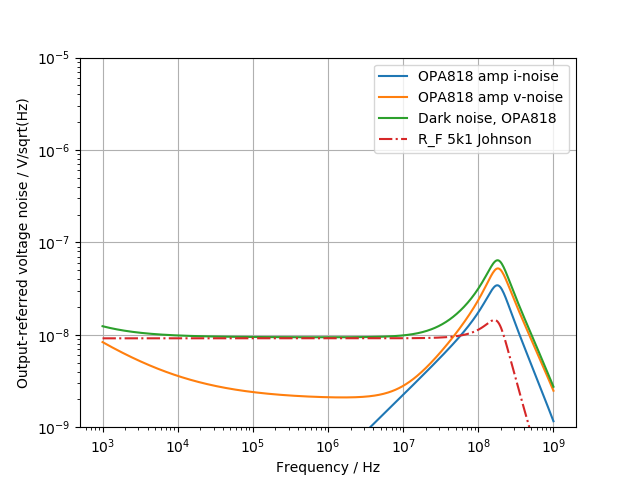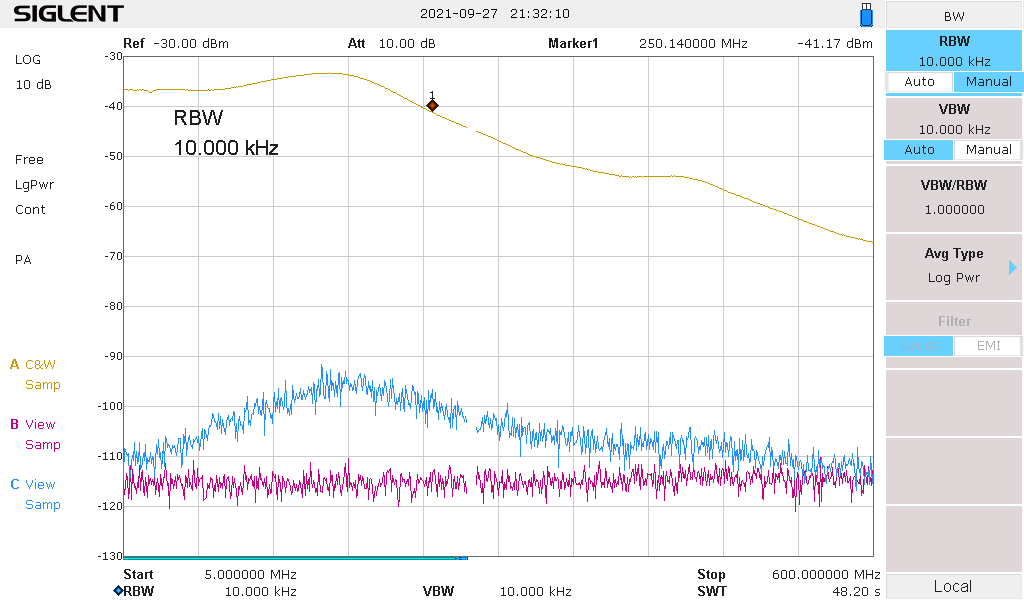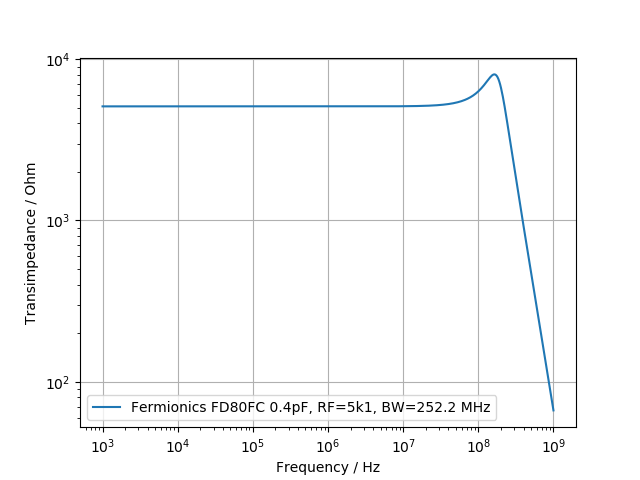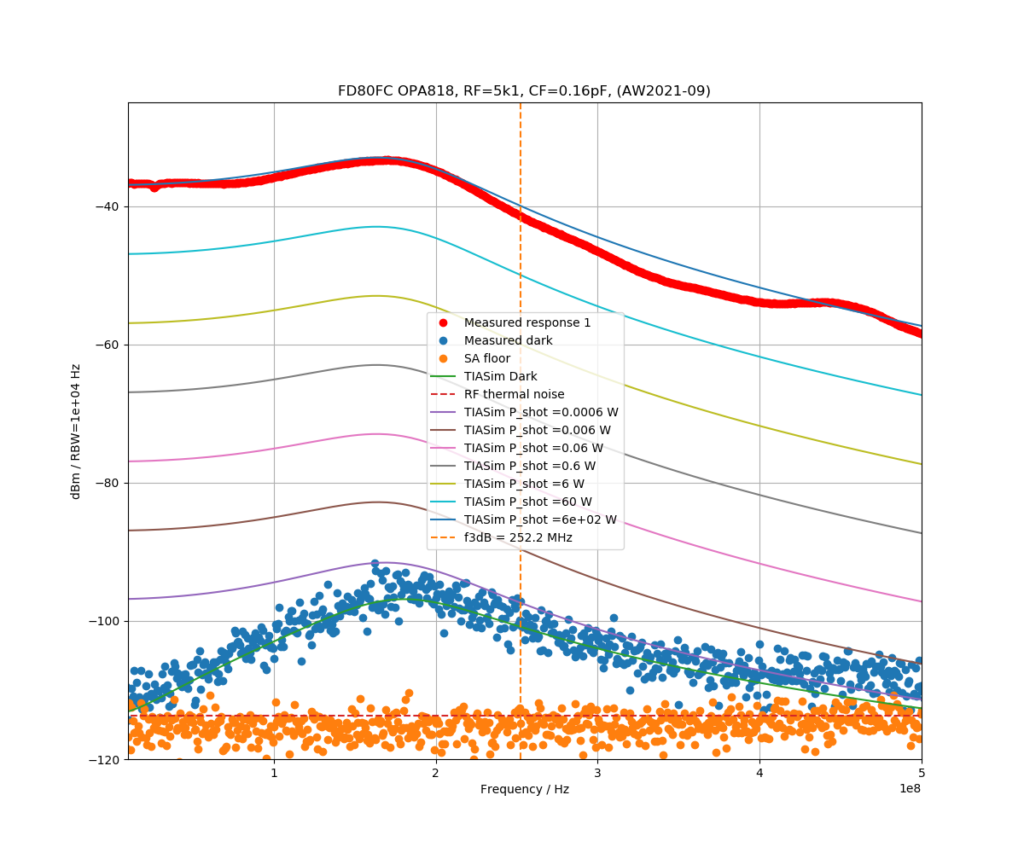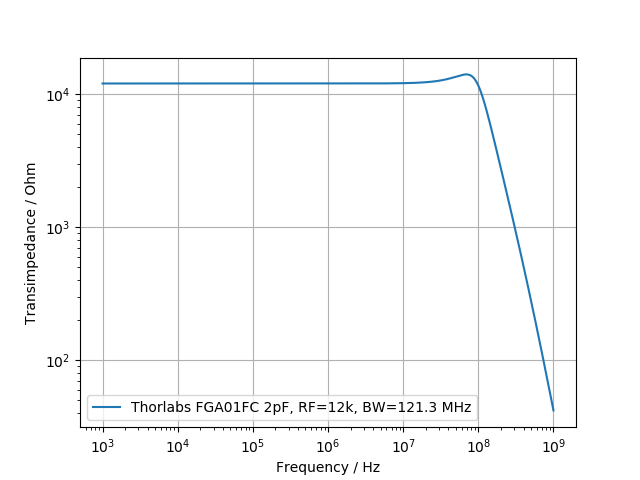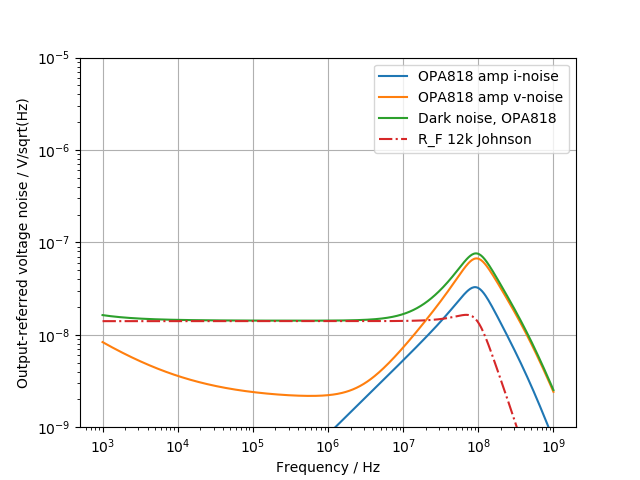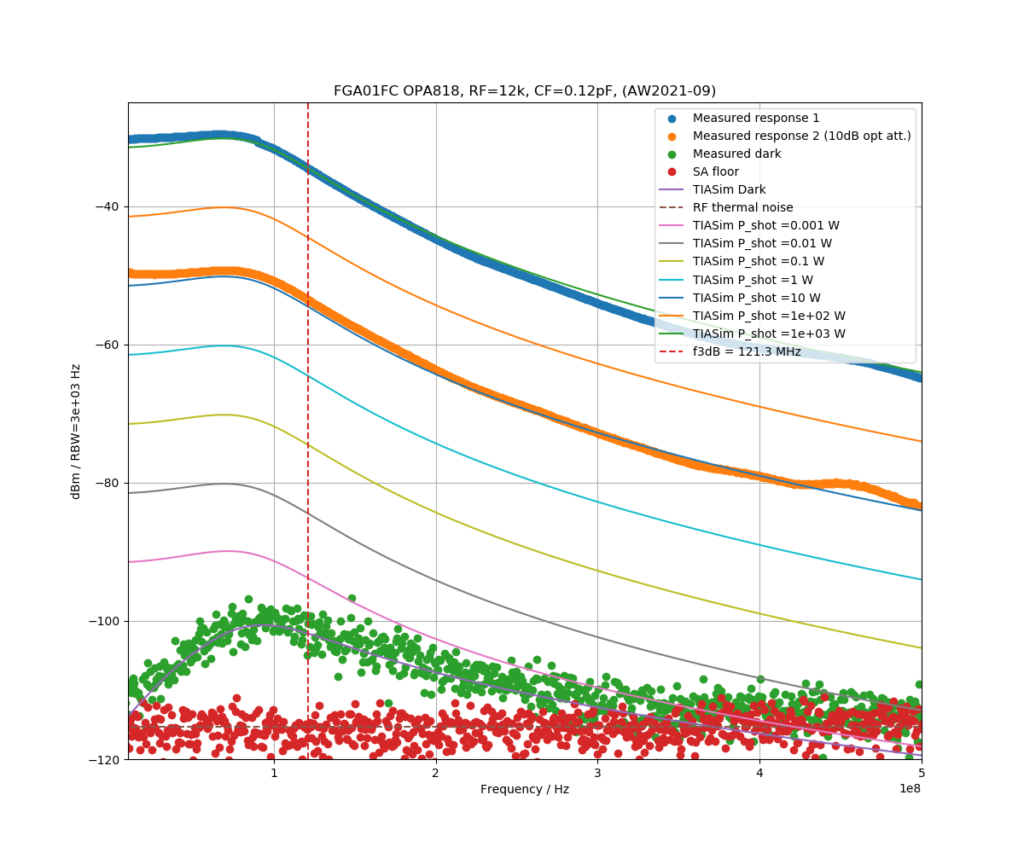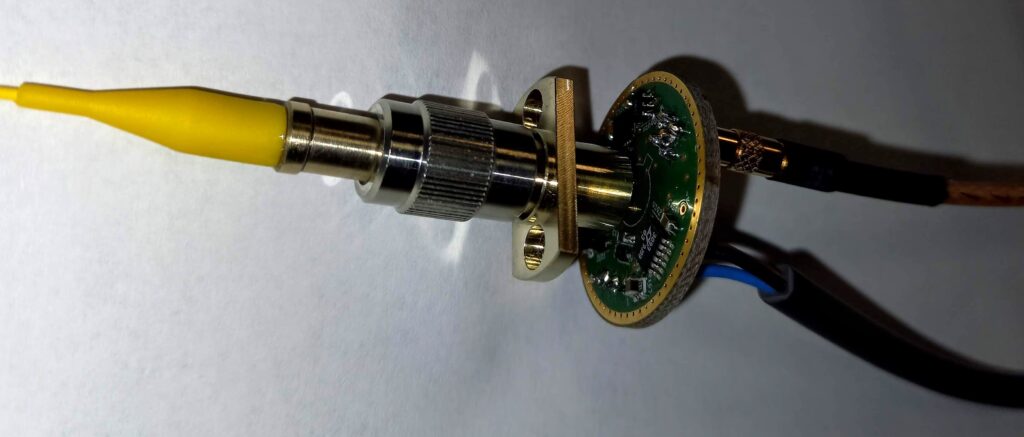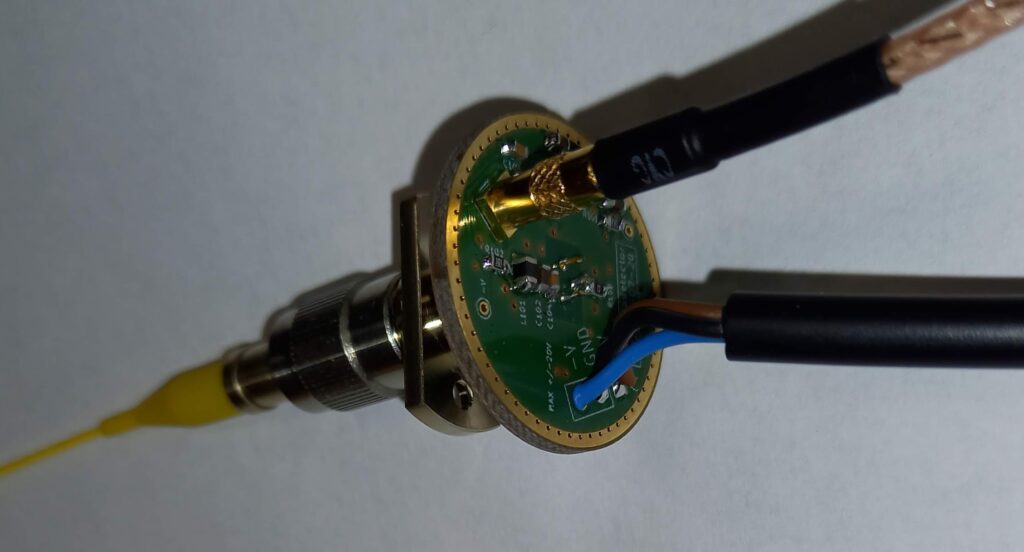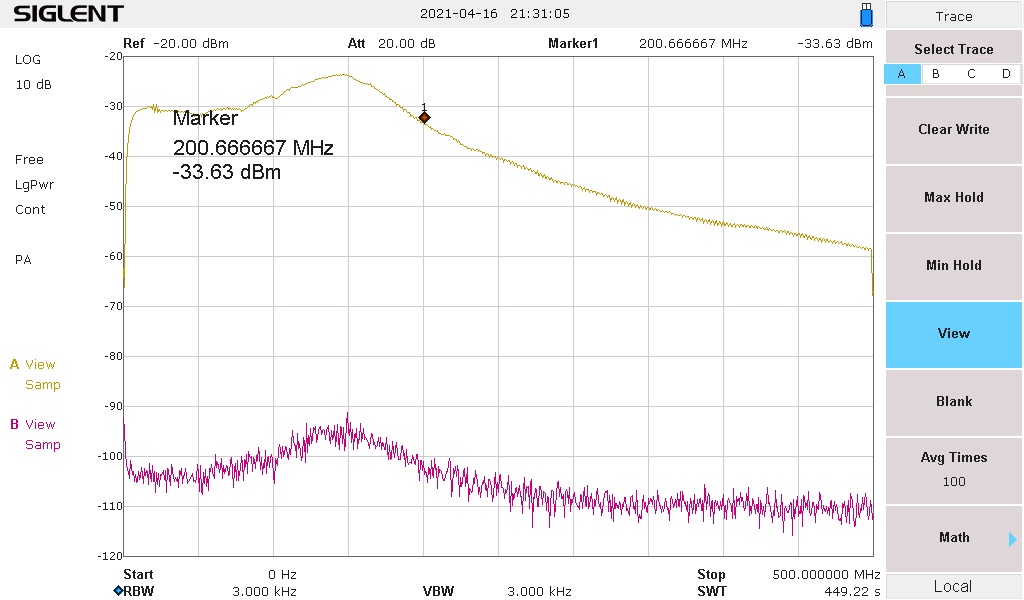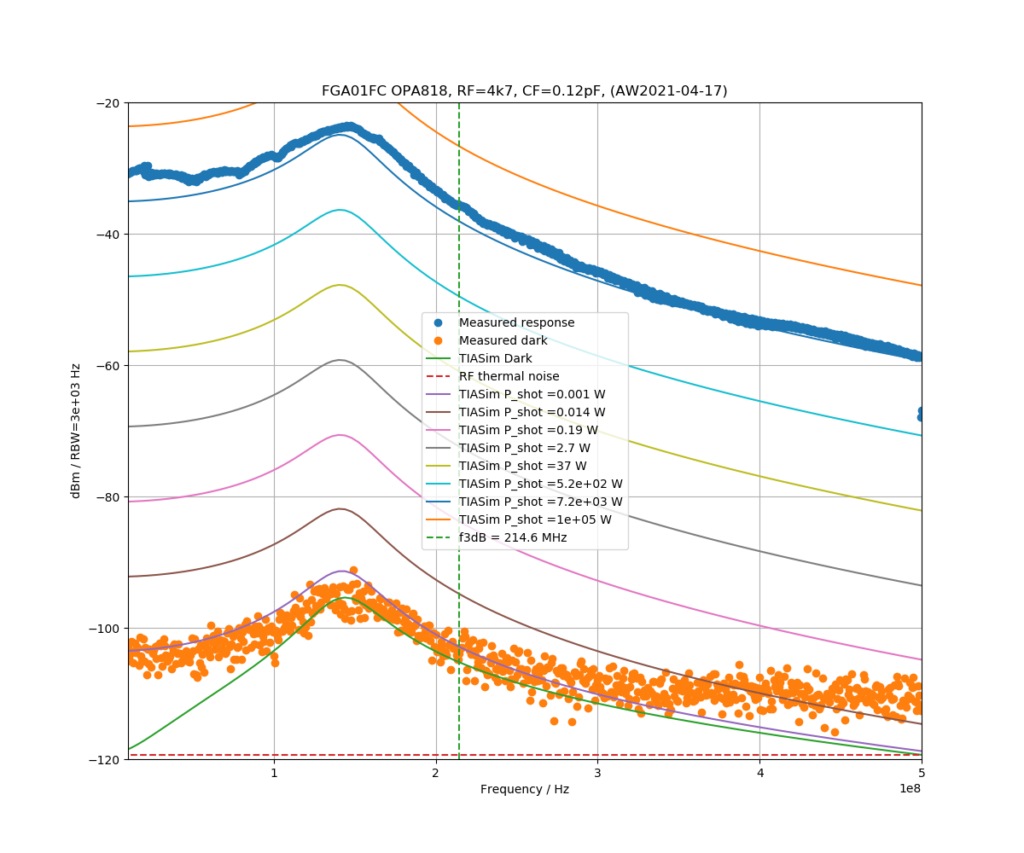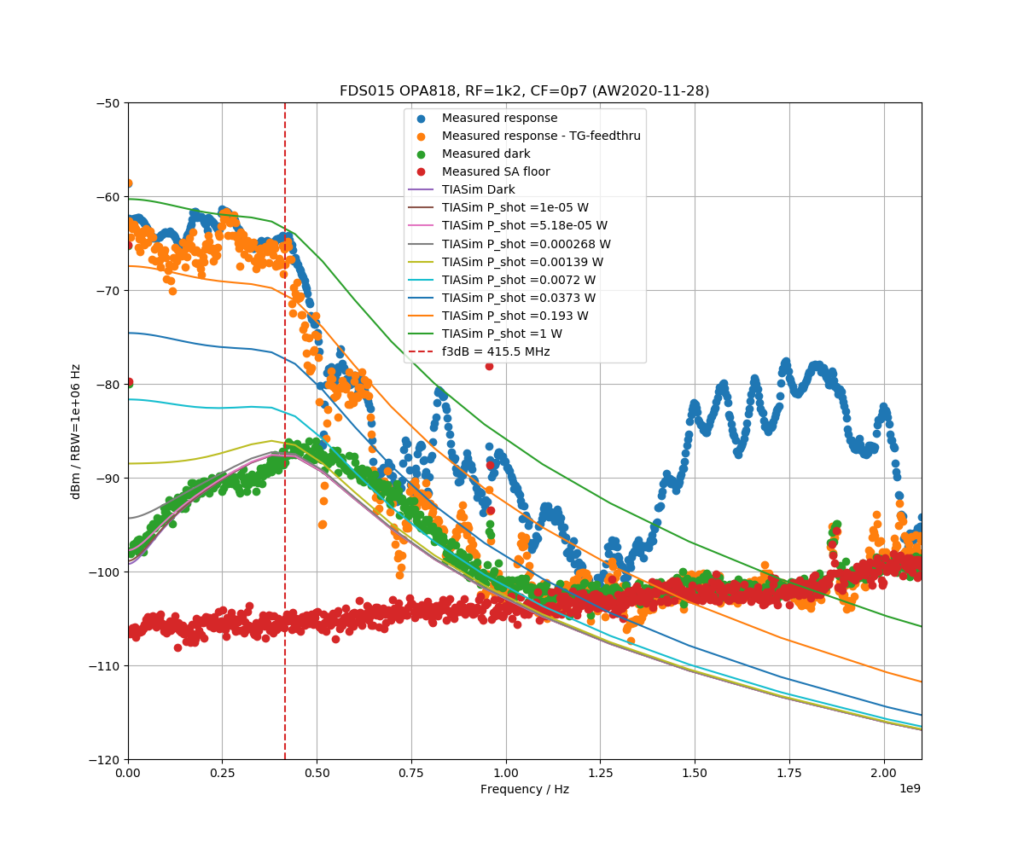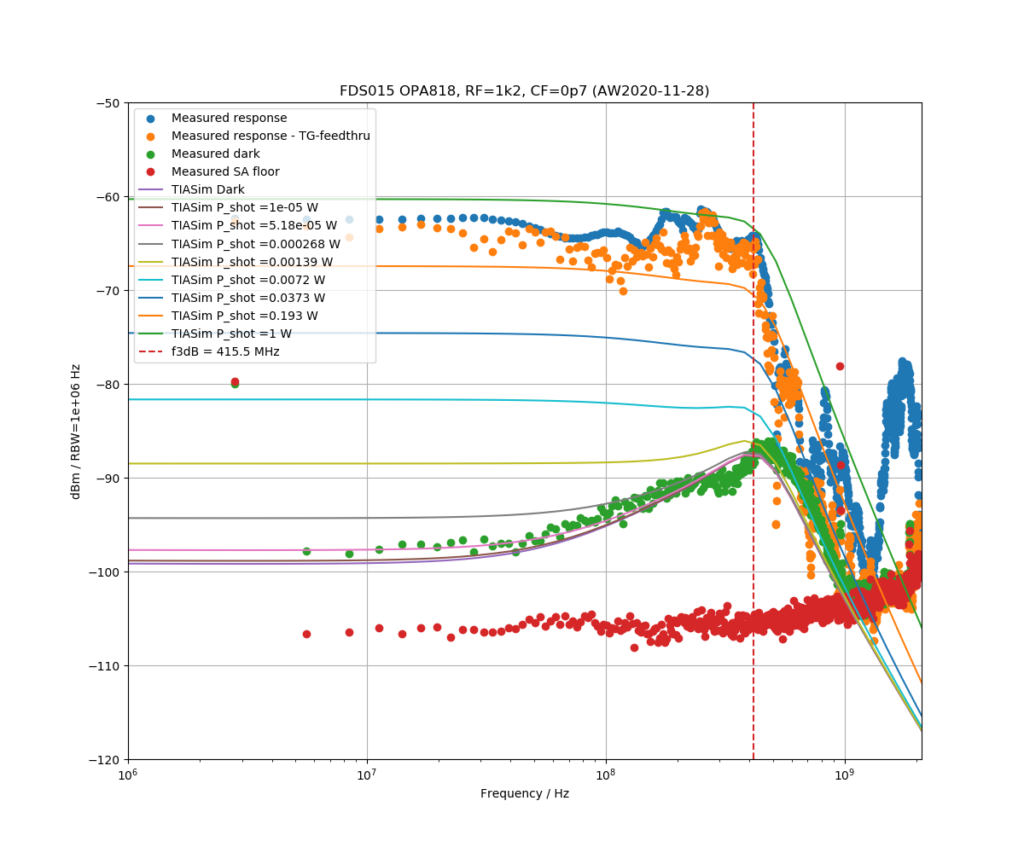Here's anoter one-inch-photodetector with a Fermionics FD80FC photodiode and 5k1 transimpedance. Bandwidth around 250 MHz. Predicted dark noise and frequency response with TIASim. The Fermionics diode has a capacitance of only 0.4 pF (80 um diameter active area), giving slightly better bandwidth than a Thorlabs FGA01FC (2 pF capacitance, 120 um diameter active area).
Tag: TIASim
120 MHz FGA01FC/OPA818 photodetector with 12 kOhm RF
Transimpedance model: TIASim
Previous similar designs:
- 200 MHz photodetector (RF 4k7)
- 400 MHz photodetector (RF 1k2)
200MHz photodetector with OPA818, FGA01FC InGaAs photodiode, and RF=4k7
Here's another one-inch-photodetector using OPA818 with a 2pF@5V InGaAs fiber-coupled photodiode FGA01FC. With a transimpedance gain of 4k7 Ohms the bandwidth is just over 200 MHz. A TIASim model predicts the dark-noise and response reasonably well with a parasitic capacitance (over RF) adjusted to ca 0.12 pF. The spectrum-analyzer settings weren't ideal for looking at the dark-noise which should go down to the thermal-noise of the 4k7 resistor (dashed line) - but here the instrument noise-floor prevents us from seeing that.
400+ MHz photodetector with OPA818
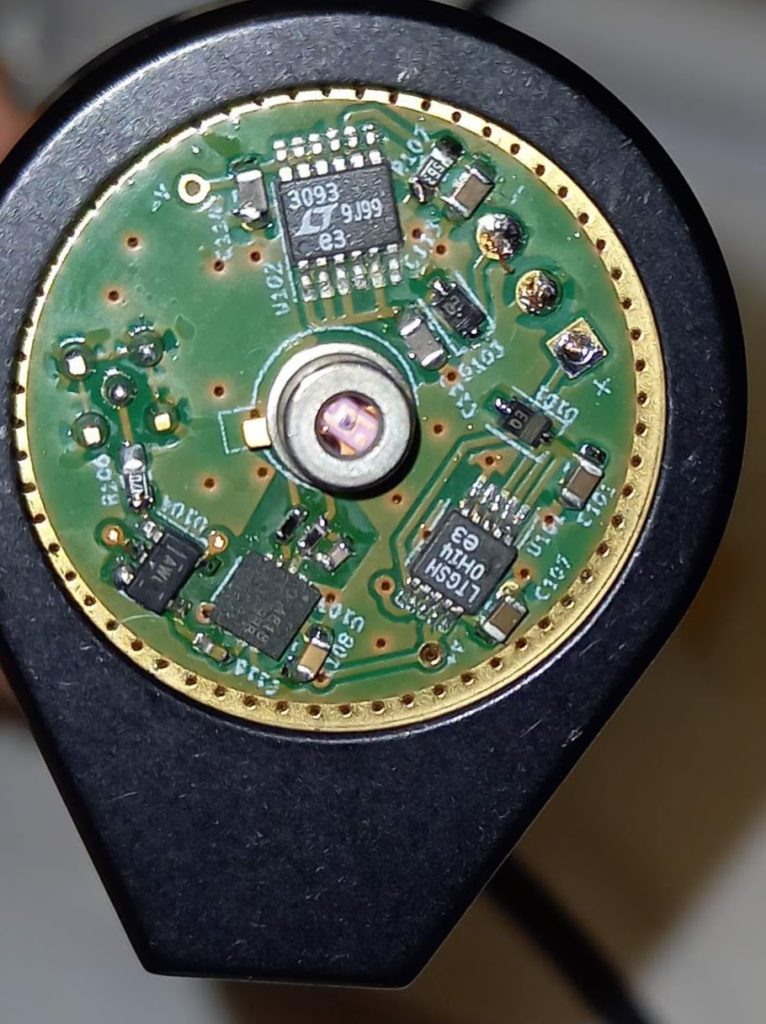
After a number of failed attempts (with HMC799, OPA859), here is a reasonably fast One Inch Photodetector using OPA818, a FDS015 photodiode, and 1.2 kOhm transimpedance. Bandwidth is above 400 MHz, with the dark-noise and frequency-response in reasonable agreement with TIASim predictions.
With the detector blocked there's quite a lot of electrical feed-through with just the spectrum-analyzer TG-output on (see blue data points, especially above 1 GHz). I tried to correct for this roughly, shown as the orange data points.
OPA818 added to TIASim
I added a model for OPA818 to TIASim that allows predicting transimpedance amplifier performance such as bandwidth and noise.
With an extra sqrt(2) factor when computing C_F (capacitance, for stability, in parallel with R_F) I get reasonable agreement with the BW vs. PD-capacitance figure in the TI datasheet.
